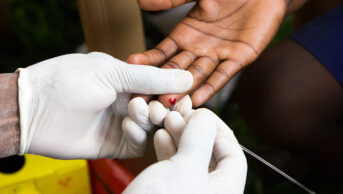
Shutterstock.com
Direct oral anticoagulants (DOACs), particularly apixaban, are associated with a reduced risk of major bleeding compared with warfarin, real-world data from primary care in the UK show.
A study published in the BMJ (4 July 2018) used data on 103,270 patients with atrial fibrillation (AF) and 92,791 patients without AF who received warfarin, rivaroxaban or apixaban to examine the risk of major bleeding and death[1]
.
Compared with warfarin, the researchers found that apixaban reduced the risk of major bleeding in both people with AF (hazard ratio [HR]: 0.66) and without AF (HR: 0.60). Dabigatran was associated with a decreased risk of intracranial bleeding in people with AF (HR: 0.45), as was rivaroxaban in those without AF (HR: 0.54). However, rivaroxaban and lower doses of apixaban were associated with increased all-cause mortality in people with and without AF.
The researchers said the findings suggested that apixaban may overall be the safest of the new anticoagulant class.
“Our results give an initial, reassuring indication of the risk patterns for all patients taking anticoagulants, in particular with respect to those prescribed apixaban,” they said.
References
[1] Vinogradova Y, Coupland C, Hill T & Hippisley-Cox J. Risks and benefits of direct oral anticoagulants versus warfarin in a real world setting: cohort study in primary care. BMJ 2018;362:k2505. doi: 10.1136/bmj.k2505
You may also be interested in

Pharmacists made 150,000 patient interventions during anticoagulant safety audits, report finds

Some patients switched to edoxaban without being properly informed, pharmacists say
